|
|
|
|
SCOODA MOTO | home or back to SCOODA MOTO
Pocket Bikes and Mini Choppers | ATV's | DOT Scooters | Helmets, Attire, Accessories and More! | Pete's Pit Stop | FAQ's | Dealer Information / Drop Ship Dealer's Log In | Contact Us | BEST PRICE!
|
||||||||||||||||||||||||||||||||||
|
|
Helmets, Attire, Accessories and More!
Jump To:
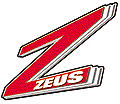 Shorty 507
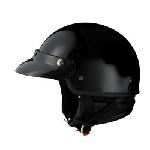 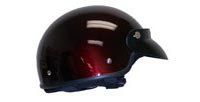 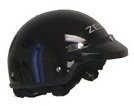 Black with weather curtain shown Wineberry Black
This is our recommended Scooter Helmet. This ZUES brand Shorty Helmet provides
approved DOT protection while giving you the freedom and comfort you would expect
from a half helmet. This design is best for peripheral vision and does not restrict your
hearing so you can remain aware of your road environment.
Comes in a High Gloss Black finish, a zip out neck curtain, patented 'No Sweat' interior.
A quality low cost, light weight helmet complete with a bubble peak visor!
Sizes: XS, S, M, L, XL (see sizing chart below)
$69.99 Includes Shipping!
PN# BX989923XLO /SIZE/COLOR
Buy It Now with Pay Pal! $69.99 Includes Shipping!
Zues Fire Series (DOT Approved)
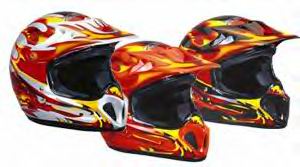 The Fire Series features a super lightweight, thermo injected ABS alloy shell,
full ventilation system with chin, forehead and rear vents. Clear coated multicolored
graphics and a High Gloss patented finish give this headgear a racy look.
Patented 'No Sweat' interior system, an adjustable - removable - washable liner
and removable cheek pads. round out the interior features. Topped off with a
non-slip eyeport trim for goggle straps.
Sizes for Tots and children up to 8 years old - Sizes XXS XS,
Regular sizes - S, M, L, XL, (see sizing chart below)
$109.99 Includes Shipping!
PN# BX989996XLO /SIZE/COLORS
Black Fire, Orange Fire, Silver Fire
Buy It Now with Pay Pal! $109.99 Includes Shipping!

CHOOSING AND FITTING YOUR HELMET
Fit should be tight but not painful. Different brands suit different head shapes. Always buy new - even a cheap new helmet is better than any used one. Look for light weight and good general finish.
Never bought a helmet?
A good helmet will protect you in a tumble and feel like a second skin once you get to know it.
Consider what sort of riding are you planning on?
There's two clear choices: road and off-road. Road helmets are designed to withstand sustained freeway speeds comfortably, while dirt lids are aimed at relatively low speeds and maximum ventilation requiring a good set of goggles as part of the set. If you do a lot of both, plan on buying helmets for both purposes.
The good news is that you don't need to spend a alot of money. We'd recommend buying something well within your budget on the basis that you update it in a few years' time. Helmets wear out. The lining gradually compresses, so it no longer fits as well; and day-to-day things like exposure to the sun's UV rays, occasional drops, the odd scratch and dent, etc.
How helmets work.
A helmet protects you by being tied closely to your head. If you bounce off the road, you want four things: 1. A shell that will absorb much of the initial impact; 2. A tight lining that stops your head from bouncing around in the shell, and also absorbs much of the force; 3. The lightest possible weight less weight means less stress on the spine; 4. A nice round-ish shell that slides down the road and doesn't grab on anything.
With worn-out helmets, the first two don't work. The overall reasoning for current helmet design is like that for cars. One crash, and the helmet dies by absorbing much of the impact. You live to buy another one which is much better than the alternative.
Fit
This is important:
1. It must be tight if you can smile without looking feeling your cheeks, it's too loose;
2. It shouldn't hurt wear your selection for 10 minutes (read a newspaper) if it's starting to hurt in some places, it's the wrong shape;
3. Make sure you work the chin-strap and visor.
4. Check the quality how does the finish of the upholstery or visor compare to another helmet of equal value?
Open or Closed Face?
There are crash studies which say open-face helmets present less risk of spinal damage, though the potential damage to your face in even a minor spill is another thing. Open face lids are also extremely uncomfortable at sustained road speeds bugs, grit and a lot of noise. Finding a good set of goggles or glasses is critical to making them work. The bugs and grit can be dealt with by a full-length visor, but the noise remains. If you're buying one helmet, get a full-face. By all means try the open-face option once you have some experience, when you can calculate the risks better, and appreciate the sun-on-face and extra noise - it's a great feeling in the right environment.
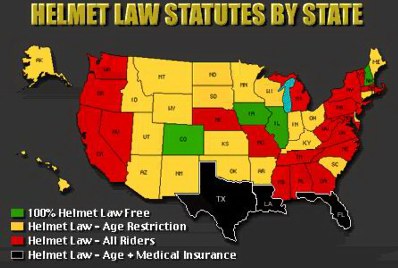 Copyright 2005 Pique Motorsport, Scooter Motique, All rights reserved.
All other product and company names are the properties of their respective owner.
|
|||||||||||||||||||||||||||||||||